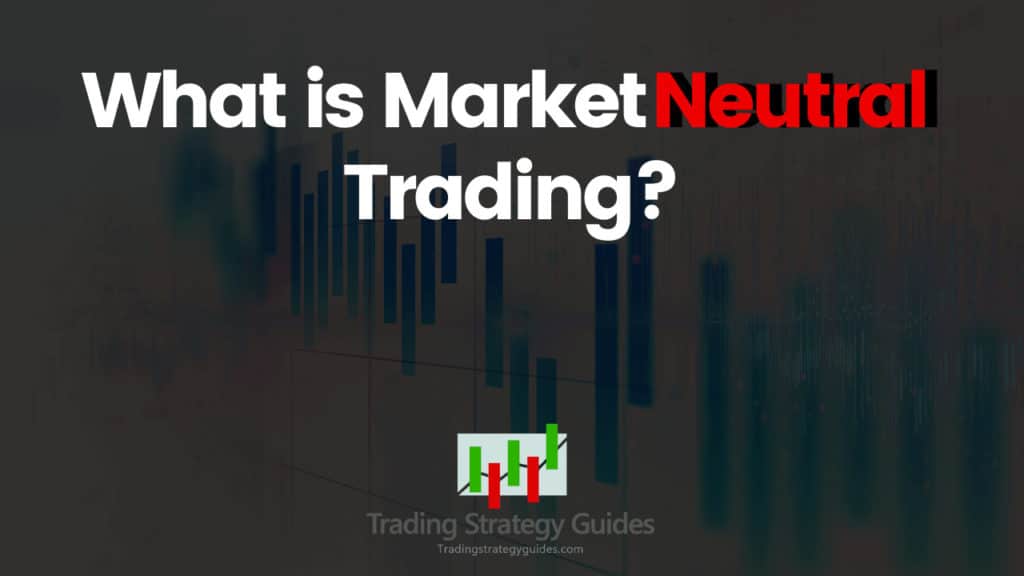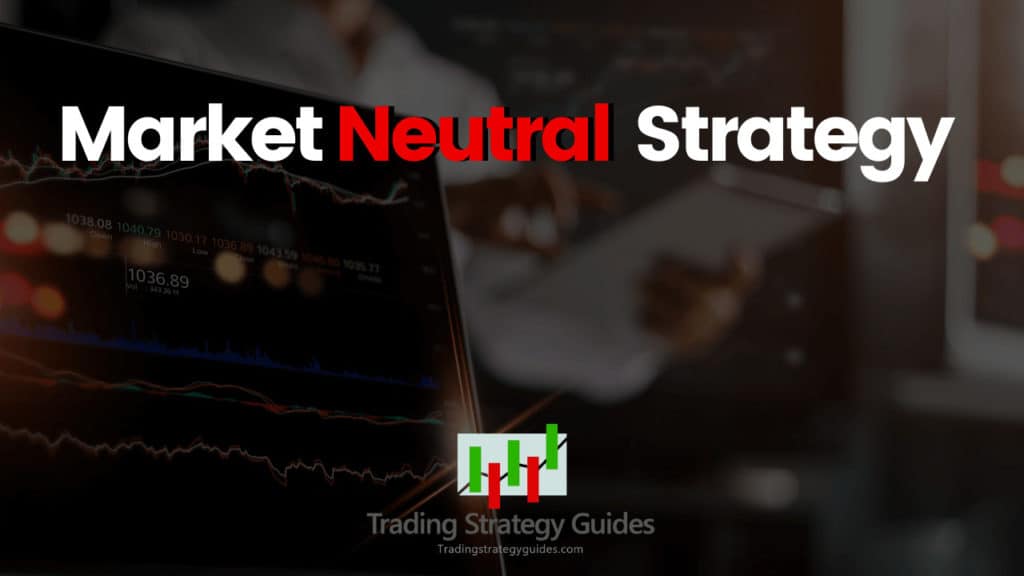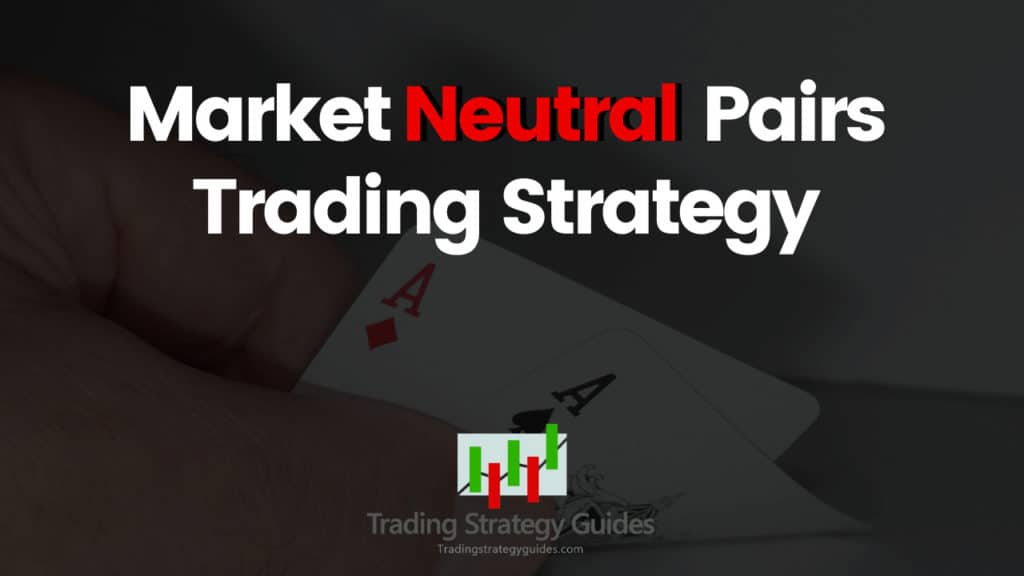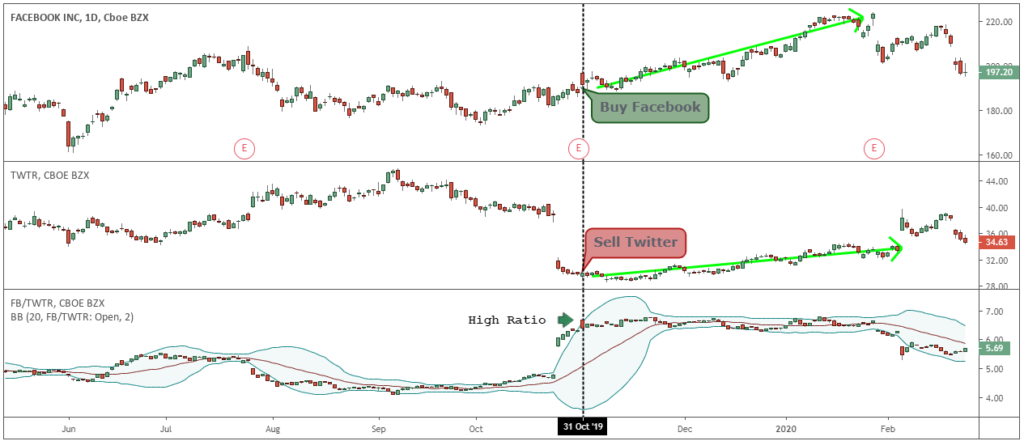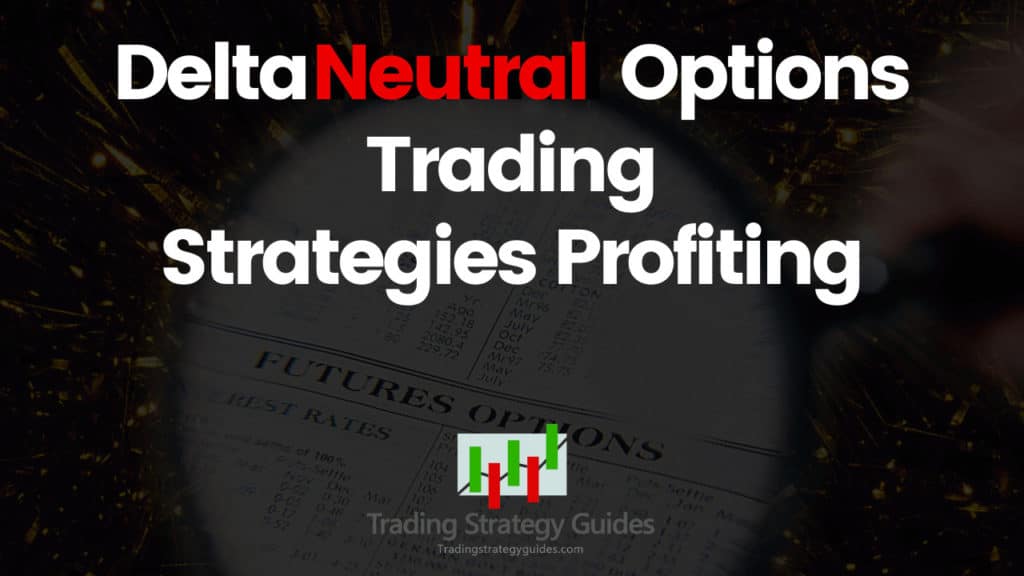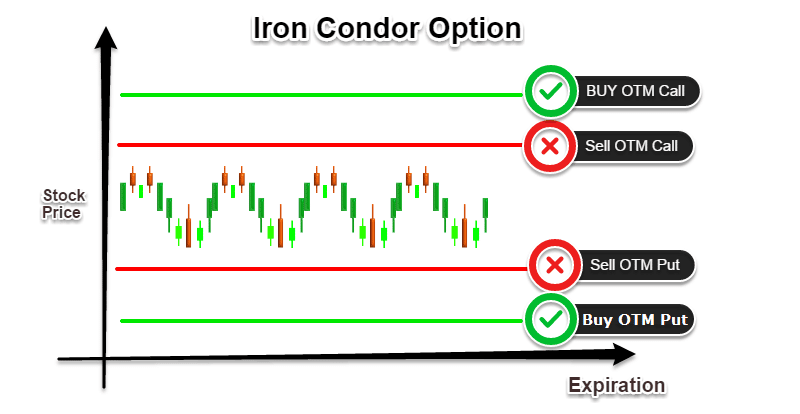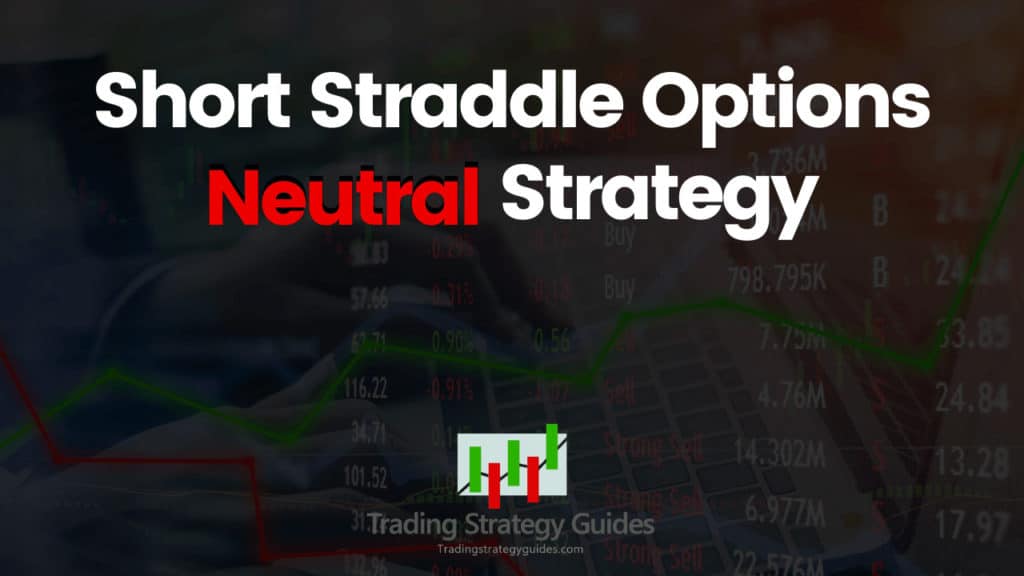Market Neutral Strategy – How to Reduce Risk from a Trade

Learn how to mitigate market risk by implementing a market neutral strategy. Throughout this trading guide, we’re going to highlight why you need to study market neutral trading instead of directional trading. We are also going to share the different types of neutral trading strategies used on Wall Street.
If this is your first time on our website, our team at Trading Strategy Guides welcomes you. Make sure you hit the subscribe button, so you get your Free Trading Strategy every week directly into your email box.
Being a directional trader and being able to forecast the market’s direction consistently it’s very difficult. Most successful traders and hedge fund managers are only right about the market direction 50% of the time or even less.
So, how come they are still able to generate those types of stellar returns?
Simply, they have given up trying to predict the market direction and instead they are taking advantage of the market neutral strategy. We’re going to have a look at some of these market neutral option strategies.
The equity long/short strategies which consist of both long and short positions are probably the most common type of market neutral strategy. However, throughout this guide, we’re going to look over some delta neutral trading strategies and market neutral pairs trading strategy.
Learn more about delta options trading with our guide here: Delta Options Trading Strategy.
Let’s begin and address what does market neutral trading means.
See below:
What is Market Neutral Trading?
Market neutral trading is a type of trading strategy that involves buying and at the same time selling an equal dollar amount of stocks.
For example, you can buy $5,000 worth of Tesla shares (if you’re bullish) and simultaneously sell $5,000 worth of Apple shares (if you’re bearish).
The basic principle behind market neutral trading is to eliminate the market risk that comes from the typical price movement. The market neutral strategies involve hedging your stock holding with the aim to offset the potential loss that can come due to market uncertainties.
In other orders, the market neutral trading strategy offers downside protection.
With the best neutral options trading strategies, you can actually profit from both rising and falling stock prices.
In summary, the best neutral strategy gain profits on the long positions if the market rises and simultaneously profit from the short positions if the market falls. So, this is really a bet on both sides of the market.
In other words, the best outcome is obtained when you buy the best stock ideas and sell the same dollar amount of your bearish stock ideas.
Moving forward…
Let’s see how market neutral trading works.
See below:
How Neutral Trading Strategies Work?
Historically speaking the stock market spends more time trading upwards than trading downwards.
But, the stock market can also have significant periods of uncertainty.
And, uncertainty is synonymous with risk.
But, what has this to do with market neutral trading?
Well, if you want to become a professional trader, you first need to become a risk manager. Our team of industry experts at Trading Strategy Guides takes risk very seriously.
So, how to manage the market risk also known as the systematic risk.
The solution is to hedge against the risk by introducing an asset class that is capable of providing positive returns whether or not the market as a whole is moving up or down. The strategies that do this are called absolute return strategies and they fall under the delta neutral option trading strategies.
The returns of the delta neutral trading strategy are un-correlated or independent of the overall market movement.
The market neutral trading involves seeking opportunities to buy a certain group of stocks while at the same time maintaining an equally weighted short position on another group of stocks.
Next, we’re going to share some reasons why you should consider the market neutral strategies.
See below:
Why Choose a Market Neutral Trading Strategy?
The market neutral options strategy includes some advantages like:
- Low correlation with traditional investments
- Diversifying the risk and return of the overall portfolio
- Generate positive returns in both rising and falling markets
The neutral trading strategies typically focus on capital preservation.
The truth is that no one knows what is going to happen next. You can use your favorite technical indicator with your best chart pattern and still the market can do whatever it wants.
With market neutral trading you’re basically protected from the sensitive price movements.
The only risk associated with neutral trading strategies is very minor. The biggest drawback is limiting the potential profits when the hedging position is implemented.
Now let’s discuss the different types of market neutral strategies that are commonly used by options traders.
See below:
Market Neutral Strategy
In this section, we’re going to highlight some of the most popular market neutral strategies. The list below includes some market neutral strategies that can be used for hedging or when the stock price is expected to trade in consolidation with a decline in volatility:
- Market neutral pairs trading strategy
- Delta neutral options trading
- Short straddle option strategy
- Condor options
- Butterfly spread
- Short strangle strategy
- Others (covered call, covered call collar, calendar call spread, iron butterfly spread, etc.)
Now, if you want to learn more about the market neutral pairs trading strategy, then we will help you.
Let’s move on…
Market Neutral Pairs Trading Strategy
Pairs trading is a market neutral strategy that focuses on the relationship between two different assets (stocks, indices, commodities, currencies or ETFs). In short, pairs trading involves buying one asset and selling the other.
With pairs trading we’re not particularly looking for the asset we bought to go up and for the asset, we sold to go down.
So, what’s the deal with pairs trading?
We’re looking at the correlation between the two assets.
What do we mean by this?
If both assets go down, we want the asset we’re short to go down more than the asset we’re long. If we bought and sold an equal amount, in this case we’re going to make money.
On the other hand, if both assets go up, we want the asset we’re long to go up more than the asset we’re short, in which case we would make a profit. Obviously, the best-case scenario is if the asset you’re long skyrockets and the one you’re short crashes.
As opposed to directional trading, with pairs trading, we look for the differential between the long and short positions.
To illustrate an example on how to construct a pairs trade we’re going to use Facebook and Twitter stock shares.
The first thing we want to calculate the ratio of the two stocks.
To learn more why we need to calculate the ratio between the two stocks, check our guide to pairs trading strategy here: Pairs Trading – The Secret to Cashing Profits.
Facebook shares are worth $197.20 while Twitter shares are worth $34.63. In this case, we have a ratio of approximately 5.69. This means Facebook stocks is 5 times more expensive than Twitter stocks.
Following the rules of the pairs trading strategy we would have bought Facebook shares and at the same time sell an equal amount of Twitter shares.
From the chart above, you can note that both Facebook shares (long position) and Twitter shares (short position) went up. However, our longs gained more as Facebook shares raised more than the loss suffered on the short Twitter shares.
Next…
Let’s examine another way to optimize your exposure to systematic risk.
See below:
Delta Neutral Options Trading Strategies Profiting
When you open an options trade, you need to keep in mind where your risk is. Basically with any type of options trade you have a risk coming from three sources:
- From the price fluctuations of the underlying instrument
- Implied volatility
- Time decay (time may help or obstruct your trade)
The delta parameter of the option will tell us how sensitive our trade is to the price fluctuations. So, when we have a delta neutral trade, no matter how much the price moves it won’t damage our trade.
A very common delta neutral trading strategy is the Iron condor.
Learn more about the Iron Condor strategy with our guide here: Iron Condor Options Trading Strategy.
In essence, the iron condor involves constructing two options:
- Call spread (a bull put spread) above the current price
- Put spread (a bear call spread) way below the current price
See the Iron condor chart below:
As long as the stock trades in-between the two options, your trade will profit regardless of the market direction. However, if the stock price extends above your range your call spread will be under pressure. Additionally, to continue to stay market neutral you would need to buy another Call so as the stock price continues to go up the extra Call option is making you money, which compensates for the spread, which is losing money.
Moving on …
If you believe the market is going to be trapped inside a tight range, there is another market neutral strategy that you can use.
See below:
Short Straddle Options Strategy
The short Straddle options strategy takes advantage of the time decay, but it’s also a race against volatility. Each day that goes by without the underlying asset to move the straddle option will profit from time erosion. The only way the straddle option can lose is if volatility goes up.
Now, you might be wondering…
How to construct a short straddle options trade?
The short straddle consists of two options:
- Selling an at the money ATM call
- Selling an at the money ATM put
Note* both options have the same strike prices and the same expiration date.
As explained earlier the short straddle will profit when the underlying stock price remains near the short strike price as time passes. Alternatively, the short straddle will profit when implied volatility decreases.
Let’s go ahead and take a look at a short straddle option example, so you can understand how the position performs in different market scenarios.
In our hypothetical example, we’re going to construct a short straddle position from the following option chain:
- Current stock price $300
- Short straddle setup: Sell 300 call for $10.30; sell 300 put for $10.20
- Net credit: $10.30 + $10.20 = $20.50
Our directional neutral trade will profit if the stock price remains right around $300.
The maximum profit potential would be $2,050 occurs if the stock price is right at $300. But, this is a low probability event. So a more realistic approach is to look at our break-even point, which is going to be the strike price which is $300 minus the net credit of $20.50 and also plus the net credit of $20.50.
So our breakeven range would be between $279.50 and $320.50. This means that we can still make money if the underlying stock price is anywhere between the breakeven range.
Please note that the biggest drawback with the short straddle options strategy is that there is unlimited loss potential on the upside. That’s because the underlying stock can increase longer than you can remain solvent.
Final Words – Neutral Trading Strategies
In summary, the most successful and profitable traders tend to do market neutral trading, spread trading or pairs trading. The neutral trading strategies are a great hedging tool, but at the same time, they can help shield you from the unpredictable changes in the market conditions.
The market neutral strategy can help you tremendously when you don’t know if the underlying stock price will go up or down. There are many neutral trading strategies that can be used with different trading scenarios. Trading without predicting the market direction can be extremely helpful especially for novice traders.
Thank you for reading!
Feel free to leave any comments below, we do read them all and will respond.
Also, please give this strategy a 5 star if you enjoyed it!
[ratings]



